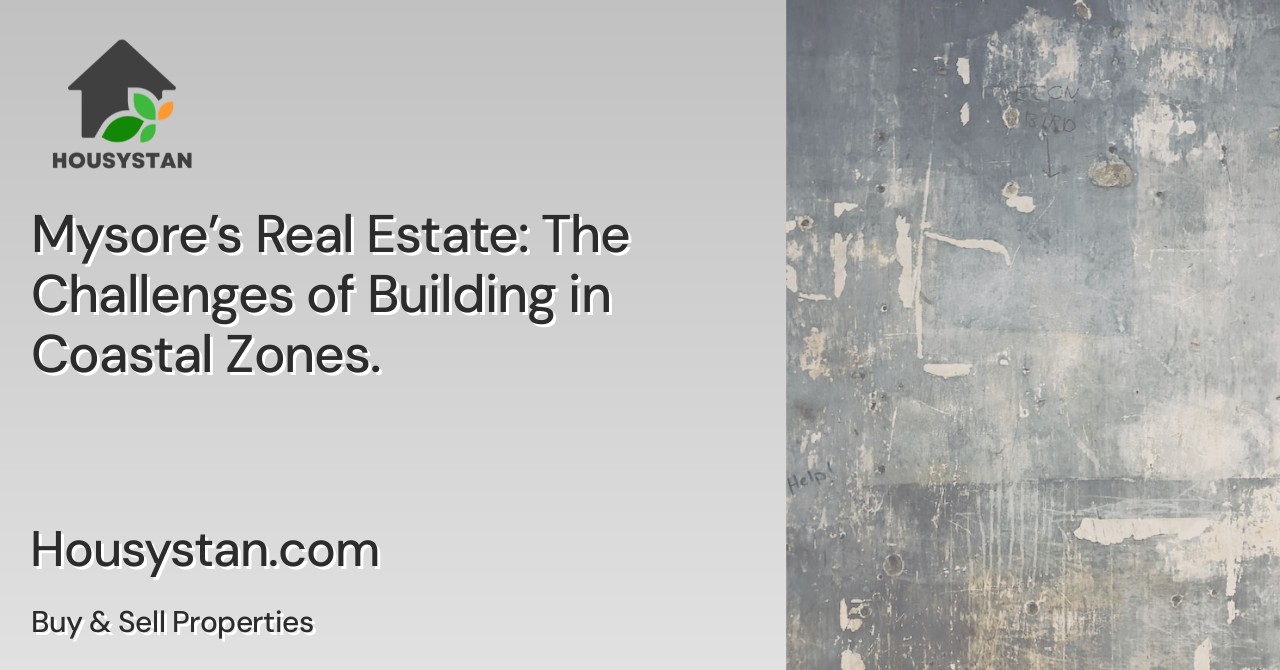Mysore’s Real Estate: The Challenges of Building in Coastal Zones
Read latest blogs and articles from Housystan

The Information mentioned here was last updated on:
4/12/2025Mysore’s Real Estate: The Challenges of Building in Coastal Zones
Mysore, renowned for its rich cultural heritage and rapid urbanization, stands out as a prime destination for property investment in Southern India. While the city itself is located inland, its expanding boundaries and developmental projects often intersect with ecologically sensitive and regulatory coastal areas of Karnataka. As Mysore’s real estate sector evolves, developers face unique hurdles when considering ventures near or within coastal zones, making it essential for investors and homebuyers to understand the complexities involved.
One of the primary challenges is strict compliance with the Coastal Regulation Zone (CRZ) norms imposed by governing authorities. These regulations safeguard fragile ecosystems, including mangroves, wetlands, and beaches, from unchecked construction. Real estate projects within designated CRZ areas must undergo rigorous environmental assessments, secure multiple clearances, and adhere to limitations on floor area ratio, building height, and permissible land use. For Mysore-based developers eyeing expansion toward coastal Karnataka, navigating these intricate guidelines is crucial to avoid legal complications and project delays.
- Verified Tenants/Buyers
- Unlimited Property Listing
- Zero subscription/charges fee
Additionally, environmental sustainability emerges as a significant concern. Coastal zones are susceptible to erosion, flooding, and saline intrusion, which can undermine the longevity and safety of structures. Developers in the Mysore real estate scene increasingly collaborate with expert consultants to implement eco-friendly designs, utilize robust materials, and adopt drainage solutions. Such strategies not only enhance property resilience but also appeal to environmentally conscious buyers seeking long-term value and security.
Infrastructure limitations present another challenge. Coastal belts often face inadequate road connectivity, unreliable utility services, and restricted access to essential amenities. For Mysore’s builders, investing in these areas demands strategic planning, coordination with local authorities, and substantial capital allocation. By proactively addressing these barriers, developers can offer future-ready properties that meet modern lifestyle expectations and boost the city’s reputation as a progressive real estate market.
In summary, Mysore’s real estate landscape offers lucrative prospects but demands careful consideration when approaching coastal zone developments. By understanding regulatory frameworks, prioritizing environmental responsibility, and overcoming infrastructure constraints, stakeholders can unlock sustainable growth opportunities. Investors and home seekers interested in Mysore’s evolving property market should consult local experts for up-to-date guidance and make informed decisions for long-term success in this dynamic region.